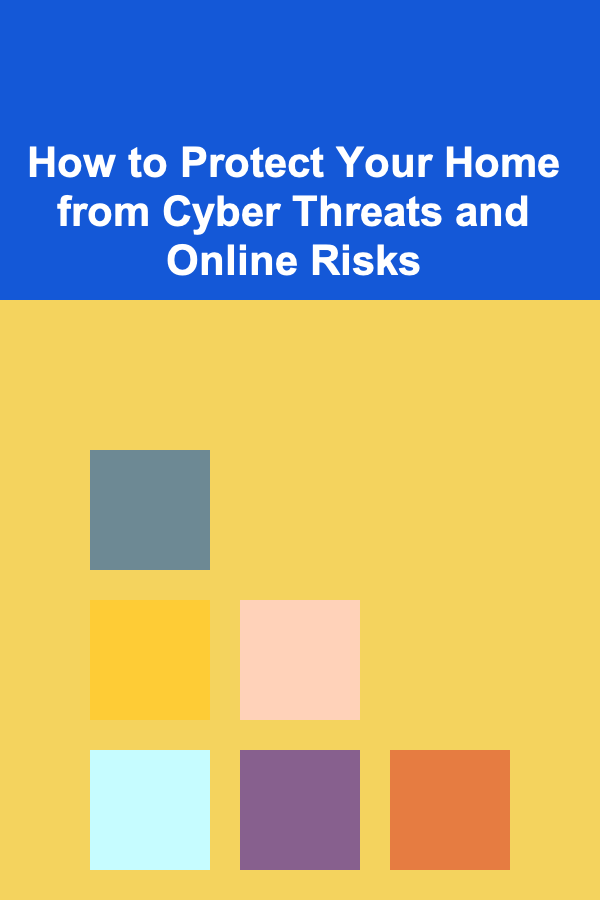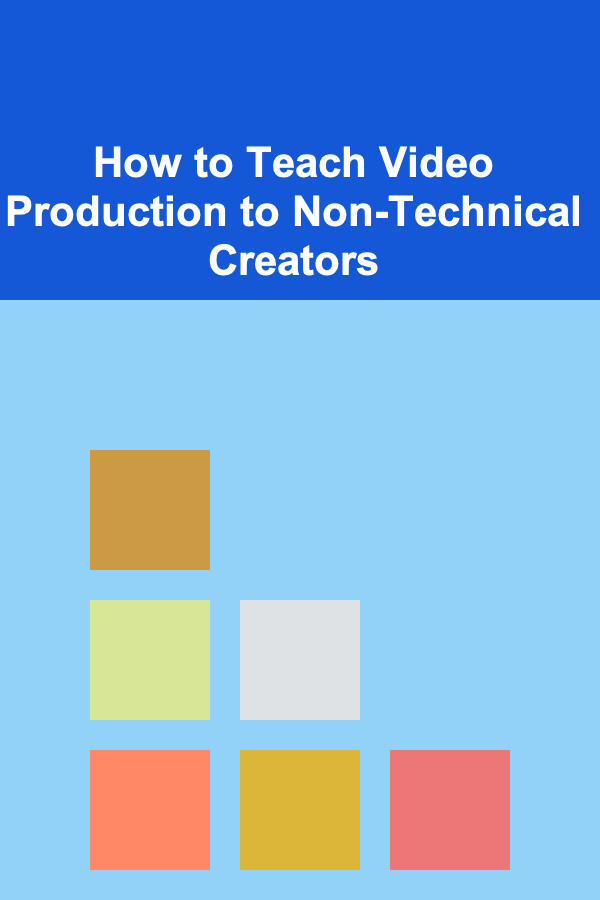
How to Create a Blogging Checklist for Beginners
ebook include PDF & Audio bundle (Micro Guide)
$12.99$10.99
Limited Time Offer! Order within the next:
Not available at this time

Blogging can be an incredibly rewarding endeavor, whether you're doing it as a hobby or hoping to build a career around it. However, starting a blog is no simple task. With so many moving parts, it can often feel overwhelming for beginners. That's where a blogging checklist can come in handy. A blogging checklist serves as a roadmap, helping you stay organized and ensuring that you cover all the necessary steps when starting and managing your blog.
In this article, we will guide you on how to create a blogging checklist for beginners. Whether you are writing your first post or looking to optimize your blog for more traffic and engagement, this comprehensive checklist will help you achieve your blogging goals efficiently.
Choose Your Blog's Niche and Target Audience
Before diving into the technicalities of starting a blog, it is essential to define the purpose and focus of your blog. A blogging niche helps you cater to a specific audience and set yourself apart from the competition.
How to Choose a Niche:
- Identify Your Passion and Expertise: Consider topics that you are passionate about or have expertise in. Blogging about something you love will make the writing process more enjoyable and sustainable.
- Research Popular Niches: Check out trending topics and analyze what readers are interested in. Use Google Trends or browse niche blogs to get a feel for what's popular.
- Evaluate Market Demand: Make sure there's a demand for content in your chosen niche. Look at search volume data and competition levels using tools like Ubersuggest or Ahrefs.
Define Your Target Audience:
- Who are you writing for? Ask yourself who your target audience is. What are their interests? What problems do they face? This will help you create content that resonates with them.
- Demographics: Consider age, gender, location, and occupation to help define your ideal reader. This will guide your content and tone.
Pro Tip:
Start by defining a broad niche and gradually narrow it down based on your audience's needs. For example, if you are passionate about health, you can narrow it down to "fitness for busy professionals" or "mental health for parents."
Select a Blogging Platform
Choosing the right blogging platform is a critical step. Your platform will dictate how your blog looks, functions, and even how easy it is to manage.
Popular Blogging Platforms:
- WordPress.org: The most popular platform, offering extensive customization options and plugins. However, it requires hosting and domain name.
- WordPress.com: A simpler version of WordPress, which doesn't require hosting, but has limited customization options.
- Blogger: A free platform by Google that is user-friendly, though somewhat limited in terms of design and functionality.
- Wix: A drag-and-drop website builder that is very beginner-friendly but offers less flexibility than WordPress.
- Medium: Focused purely on writing and publishing, it's great for beginners but lacks control over design and monetization.
Considerations for Choosing a Platform:
- Ease of Use: Choose a platform you can easily navigate. WordPress is powerful but has a learning curve, while platforms like Blogger and Wix are simpler.
- Customization : If you want full control over design and functionality, WordPress.org is the best choice.
- Monetization: Consider whether the platform supports monetization through ads, affiliate marketing, or selling products.
Pro Tip:
For long-term growth and flexibility, it's advisable to choose WordPress.org as it offers maximum customization and control over your blog.
Purchase a Domain Name and Hosting
Your domain name is the first impression visitors will have of your blog. It should be memorable, easy to spell, and related to your niche. In addition, purchasing reliable hosting is vital to ensure your blog runs smoothly.
How to Choose a Domain Name:
- Keep it Short and Simple: A short and easy-to-remember domain name is crucial.
- Make It Relevant: Incorporate keywords related to your niche if possible.
- Avoid Numbers and Hyphens: These can confuse readers and make your domain harder to remember.
How to Choose Hosting:
- Reliability: Your hosting provider should guarantee uptime and fast page load speeds.
- Support: Look for hosts that provide excellent customer support, especially if you're a beginner.
- Scalability: As your blog grows, you may need to upgrade your hosting plan. Choose a provider that offers scalable options.
- Security: Your host should provide SSL certificates and regular backups to protect your blog.
Popular Hosting Providers:
- Bluehost: Great for beginners with one-click WordPress installation.
- SiteGround: Offers excellent performance and customer service.
- HostGator: Known for affordable plans and reliable uptime.
Pro Tip:
Most hosting providers offer a free domain name for the first year when you purchase hosting, which can help you save on initial costs.
Design Your Blog
The design of your blog plays a significant role in attracting and retaining readers. A clean, organized design makes it easy for visitors to navigate your site.
Select a Theme:
- Free vs. Paid Themes: While free themes are a great starting point, paid themes often offer more customization options and better support.
- Responsive Design: Ensure the theme is mobile-friendly as a large portion of web traffic comes from mobile devices.
- Customization: Choose a theme that allows you to customize the layout, fonts, and colors to match your brand.
Essential Pages to Include:
- Home Page: Your landing page should clearly represent your blog's niche and purpose.
- About Page: Introduce yourself and explain the mission of your blog.
- Contact Page: Provide an easy way for readers to contact you, whether it's through a form or social media links.
- Privacy Policy Page: Essential for legal protection, especially if you collect data or plan to monetize your blog.
Pro Tip:
Consider using a page builder plugin like Elementor (for WordPress) if you want more control over your blog's design without learning coding.
Start Writing Content
Once your blog is set up, it's time to start writing. Content is the heart of your blog, and high-quality posts will help you build an audience.
Types of Content:
- How-to Guides: People often turn to blogs for practical advice. Write step-by-step guides to help your audience.
- Listicles: Posts with lists (e.g., "10 Ways to Improve Your Productivity") tend to perform well because they are easy to read and share.
- Product Reviews: If you're promoting affiliate products, writing reviews can help your readers make informed decisions.
- Personal Stories: Sharing personal experiences can create a connection with your audience.
How to Write a Blog Post:
- Catchy Title: Craft attention-grabbing titles to increase click-through rates.
- Engaging Introduction: Start with a hook to draw readers in. Share a problem, ask a question, or present an intriguing fact.
- Clear Structure: Use subheadings, bullet points, and short paragraphs to make your content easy to scan.
- Include Visuals: Use images, infographics, and videos to break up text and make your posts more engaging.
- Call to Action (CTA): End your posts with a CTA encouraging readers to leave comments, share the post, or explore related content.
Pro Tip:
Use a tool like Grammarly to ensure your content is free from spelling and grammatical errors. Also, tools like Yoast SEO can help optimize your blog posts for search engines.
Promote Your Blog
Creating content is only half the battle. Promoting your blog is essential for building an audience and increasing traffic.
Social Media:
- Facebook: Create a page for your blog and share your posts with your audience.
- Twitter: Share blog updates, engage with followers, and use relevant hashtags.
- Instagram: Post visually appealing content related to your niche to attract followers.
- Pinterest: Ideal for driving traffic to blog posts, especially those with visuals like infographics or DIY guides.
Email Marketing:
- Build an Email List: Use a tool like Mailchimp or ConvertKit to start collecting emails from readers who want to receive updates.
- Send Regular Newsletters: Keep your audience engaged with regular email updates, including new blog posts, promotions, or exclusive content.
Guest Blogging:
- Write Guest Posts: Collaborate with other bloggers in your niche by writing guest posts. This helps you reach a new audience and build backlinks to your blog.
Pro Tip:
Focus on a few platforms at first and gradually expand your reach as you gain experience.
Analyze and Improve Your Blog
Once your blog is live, it's important to track its performance and make necessary adjustments. This will help you grow your blog and attract more readers.
Use Analytics Tools:
- Google Analytics: Track the number of visitors, their behavior on your site, and traffic sources.
- Heatmaps: Tools like Hotjar allow you to track where visitors click and how they navigate your site.
Key Metrics to Monitor:
- Traffic: Keep an eye on the number of visitors your blog receives, and try to increase it by improving SEO and promotion.
- Bounce Rate: A high bounce rate may indicate that visitors are leaving your site too quickly. This could be due to poor content or a slow website.
- Conversion Rate: Track the percentage of visitors who take the action you want, whether it's signing up for your newsletter or making a purchase.
Pro Tip:
Set aside time every month to review your blog's performance and optimize your content, SEO, and promotion strategies accordingly.
Conclusion
Creating a blogging checklist is a great way to stay organized and focused as you embark on your blogging journey. By following these steps, you can build a blog that resonates with your audience and grows over time. Whether you're blogging for fun or hoping to turn it into a full-time career, having a solid plan in place is essential for success. Stay consistent, continually improve, and most importantly, enjoy the creative process!

How to Clean and Maintain Your Home's Oven and Stove
Read More
How to Make Money Online as a Cloud Services Developer? 10 Actionable Ideas
Read More
How to Protect Your Home from Cyber Threats and Online Risks
Read More
How to Teach Video Production to Non-Technical Creators
Read More
How to Use LinkedIn to Find Remote Opportunities
Read More
Exploring Nanotechnology in Everyday Life: A Deep Dive
Read MoreOther Products

How to Clean and Maintain Your Home's Oven and Stove
Read More
How to Make Money Online as a Cloud Services Developer? 10 Actionable Ideas
Read More
How to Protect Your Home from Cyber Threats and Online Risks
Read More
How to Teach Video Production to Non-Technical Creators
Read More
How to Use LinkedIn to Find Remote Opportunities
Read More